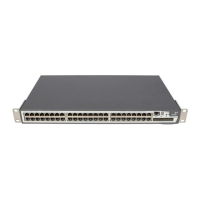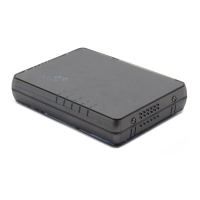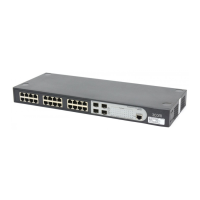IP Routing Policy Configuration Commands 227
Use the undo if-match interface command to cancel the setting of matching
condition.
By default, no match sub-statement is defined.
Related command: if-match acl, if-match ip-prefix, if-match ip
next-hop
, if-match cost, if-match tag, route-policy, apply ip next-hop,
apply cost, apply local-preference, apply origin
and apply tag.
Example
Define one match sub-statement to match the route whose next hop interface is
Vlan-interface 1.
<SW5500>system-view
System View: return to User View with Ctrl+Z.
[SW5500]route-policy permit node 1
% New sequence of this list
[SW5500-route-policy]if-match interface Vlan-interface 1
if-match ip next-hop Syntax
if-match ip next-hop { acl
acl_number
| ip-prefix
ip_prefix_name
}
undo if-match ip next-hop [ ip-prefix ]
View
Route Policy view
Parameter
acl_number
Enter the number of the access control list used for filtration. The
range is 1 to 99.
ip_prefix_name
Enter the name of the prefix address list used for filtration.
Description
Use the if-match ip next-hop command to configure one of the match rules of
route-policy on the next hop address of the routing information.
Use the undo if-match ip next-hop command to cancel the setting of the ACL
matching condition. Use the
undo if-match ip next-hop ip-prefix
command to cancel the setting of the address prefix list matching condition.
Filtration is performed by quoting an ACL or a address prefix list.
Related commands: if-match interface, if-match acl, if-match ip-prefix,
if-match cost, if-match tag, route-policy, apply ip next-hop, apply
cost, apply local-preference, apply origin and apply tag
.
Example
Define a match sub-statement. It permits the routing information, whose route
next hop address passes the filtration of the prefix address list p1, to pass this
match sub-statement.
<SW5500>system-view
System View: return to User View with Ctrl+Z.

